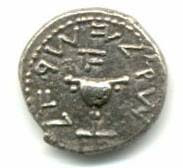So yesterday, I headed straight from work to the airport to continue the checkout.
I did the preflight and then Mike arrived and we discussed the plan for the evening - fly to D95 Lapeer and do some pattern work to get used to the Dakota's handling.
Since the wind was out of 220 at 8 knots we'd use Runway 18 there.
Turns out, landing the Dakota well is all about airspeed engagement. If you're on speed in each stage of the pattern, you're going to get a good landing in.
Downwind is 90 once you hit midfield, base is 85, final is 80 slowing to 75 on short final.
Once I got those numbers dialed in, everything went very well.
First landing was ok but not great, a bit left of center-line and needed to keep the nose up more. Not the best approach.
For the second pattern, I really worked on nailing the airspeeds and having the correct pitch and power in and the next landing was right on center and very nice indeed.
Did it again and then we started adding some more fun into the mix.
I then did short field takeoffs which in a Dakota are rather fun - two notches of flaps, rotate at 50 and climb at Vx. The plane lifts off with no issues at all, gains airspeed rapidly, and it is a fun and easy performance takeoff.
We then did some short-field landing practice and with managing the air speed correctly for them I nailed those pretty well too. The Dakota is very much a numbers aircraft - get it on the proper airspeed, at the proper time, with the proper pitch and power settings and it is a shoe-in for a good landing.
Then we did some soft-field takeoffs. The short field takeoff begins with the yoke puled all the way back and two notches of flaps in. The only problem is the Dakota really wants to climb and get out of ground effect before it is ready to actually fly and you have to quickly transition and push the yoke forward to stay in ground effect and pickup speed, put not so soon that you stay on the ground or return to it. Took a bit of finesse but I got it.
Soft field landings are the same as regular landings for the most part, but you leave a bit more power in at landing and keep the nose high as long as possible on the ground. Easy.
A couple of other planes came and went while we were practicing, including a Cirrus doing IFR practice missed approaches on Runway 36 -- opposite the wind and our direction of travel, which made for a few interesitng moments including one where I simply held short of the runway after landing until we figured out what the Cirrus was actually doing as he wasn't quite clear. The second time he did his approach practice we were on final as he zoomed in but he stayed quite high above traffic pattern altitude so it was no issue.
We then played with the GFC 500 autopilot on the way back to Pontiac and I enjoyed another opportunity to use it. I sorta knew how to use it having done it once before, but it was great and got a good refresher and I'm fully up on it now.
We then headed back to Pontiac and the pattern was all sorts of busy. First had an instruction to report a 2 mile right base, but as I reported that Tower had us break off the base to do an extended downwind for traffic.
I used the autopilot to turn us onto the downwind nice and easy and we flew outward for quite awhile. Disconnected the autopilot, and turned back in when instructed to by the controller and was then number 2 to land.
Really extended final as a result and it was pretty much civil twilight but not night yet so I brought it in for a nice landing. Then taxi'd to the hangar, wiped the bugs off and put the plane to bed.
Mike said I did very good with the landings and had really improved my control of the plane, and assuming I keep that up on the next ride, he has no problem signing me off for the high-performance endorsement and the Dakota.
That's 1.8 and 8 landings.

2 comments:
It's always the numbers... Just don't ever get them confused!!!
Old NFO: Yep, confusing them would be rather problematic.
Post a Comment